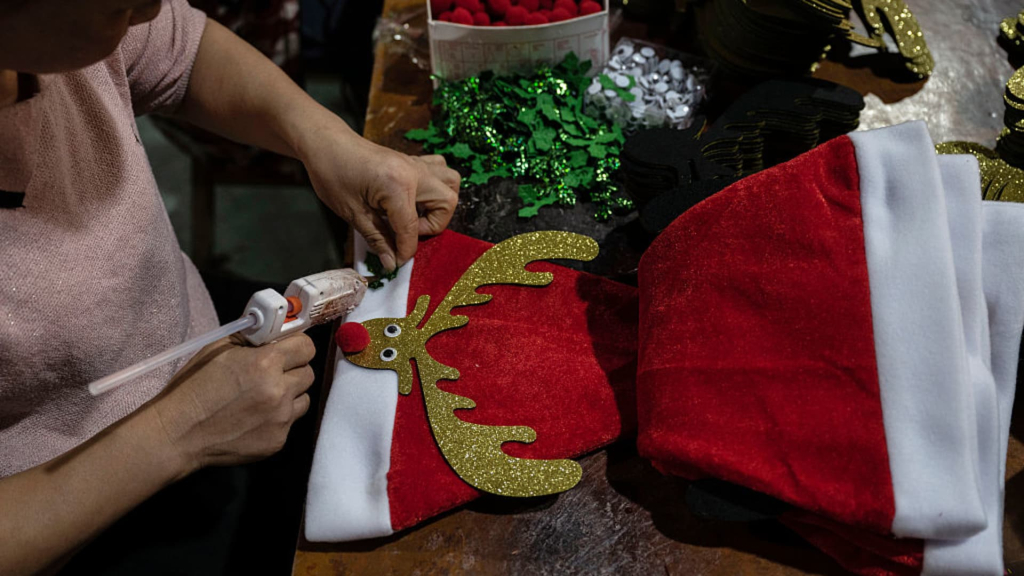BEIJING — Recent tariff adjustments between the U.S. and China, even if not permanent, aim to alleviate a significant concern for consumers this holiday season: the sourcing of Christmas gifts.
According to calculations from Finance Newso based on data from the National Retail Federation, nearly 20% of U.S. retail sales last year were generated during the Christmas season, which witnessed a 4% year-over-year increase, culminating in a record $994.1 billion in sales.
Ryan Zhao, director at Jiangsu Green Willow Textile, an export-oriented firm, stated Monday, “This 90-day period can help mitigate most product shortages for the U.S. Christmas market.” His company had temporarily halted production for its U.S. clientele last month but anticipates a return to order fulfillment, albeit not at previous volumes, as many U.S. buyers have turned to alternative suppliers outside of China.
Typically, U.S. retailers place their orders months in advance, allowing Chinese manufacturers sufficient time to produce and ship products in time for major holidays. However, the sharp increase in tariffs in early April forced some companies to pause operations, raising concerns over the ability of supply chains to recover in time to meet Christmas demand.
Cameron Johnson, senior partner at consulting firm Tidalwave Solutions in Shanghai, remarked that “the 90-day window helps avert a potential disaster for retailers this Christmas.” However, he cautioned that it does not mitigate the situation for Father’s Day sales and could still adversely affect back-to-school sales, as businesses face increased costs due to tariffs and logistics, which will inevitably drive prices higher.
While the recent adjustments have provided some relief, U.S. duties on Chinese goods remain in effect. Earlier this year, the Trump administration implemented 20% tariffs on certain Chinese products in two phases, attributing this decision to China’s alleged involvement in the U.S. fentanyl crisis, a pervasive issue linked to tens of thousands of overdose deaths annually.
This resulted in an escalating trade conflict, with tariffs exceeding 100% on goods exchanged between the two nations. Though many of these tariffs have been put on hold for 90 days under the latest U.S.-China agreement announced Monday, previously imposed tariffs are still active.
UBS has projected that the average U.S. tariff on Chinese goods remains around 43.5%, including past duties. For example, running shoes manufactured in China now face a total duty of 47%, significantly higher than the 17% rate recorded in January. Tony Post, CEO of Topo Athletic, noted that while his company benefitted from some cost reductions from Chinese suppliers, they still needed to raise prices slightly to compensate for the tariff impacts.
Post expressed cautious optimism, saying, “While this is good news, we remain hopeful that both countries can establish a more satisfactory permanent arrangement. We are dedicated to our Chinese suppliers and are relieved, at least temporarily, that we can continue this partnership.”
Meanwhile, U.S. retail giant Walmart has refrained from commenting on how the recent reduction in tariffs might influence its orders from China.
The company stated, “We are encouraged by the progress made over the weekend and will provide further details during our upcoming earnings call later this week.” Walmart is scheduled to release its quarterly results on Thursday.
April data showed that Chinese exports to the U.S. plummeted by over 20% compared to the previous year, even as overall Chinese exports grew by 8.1%. Goldman Sachs reported that approximately 16 million jobs in China are connected to the production of goods for the U.S. market.


























